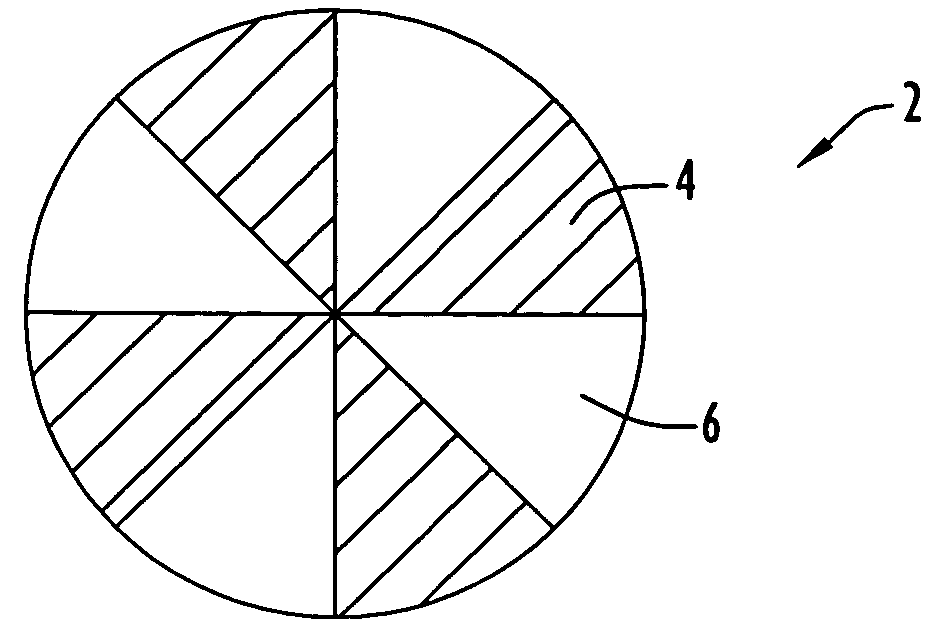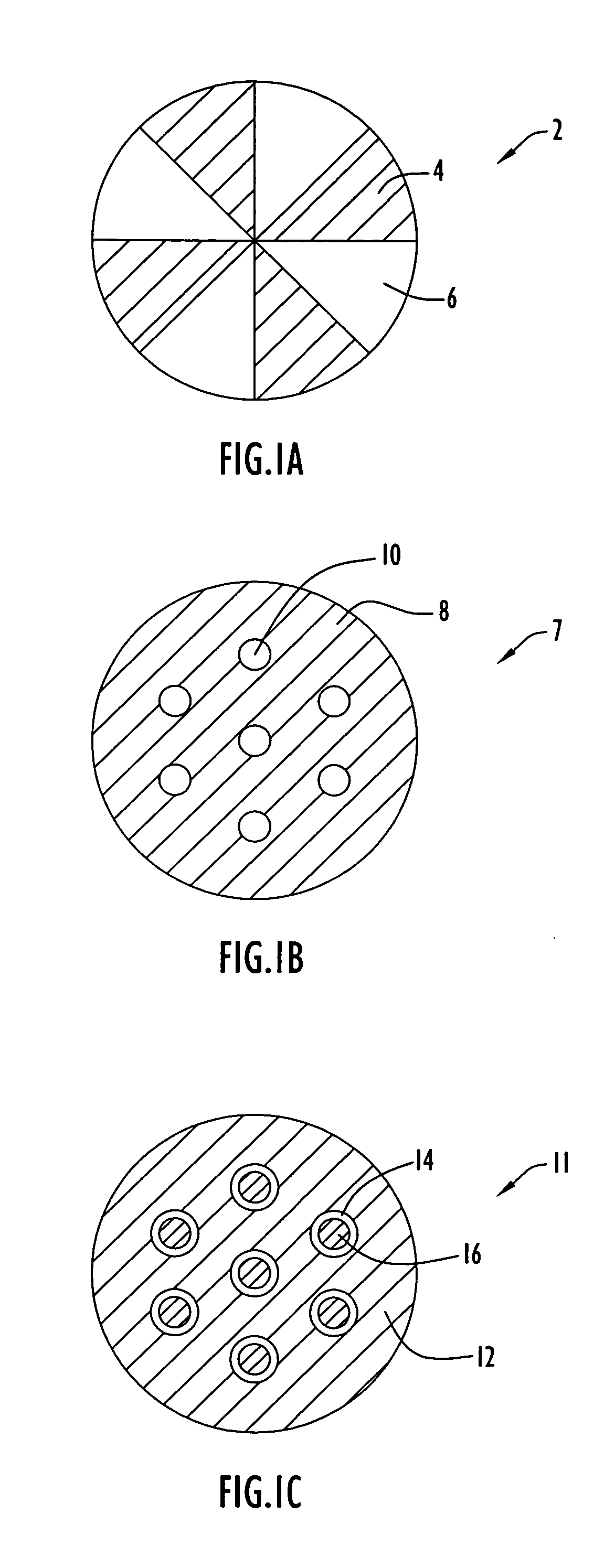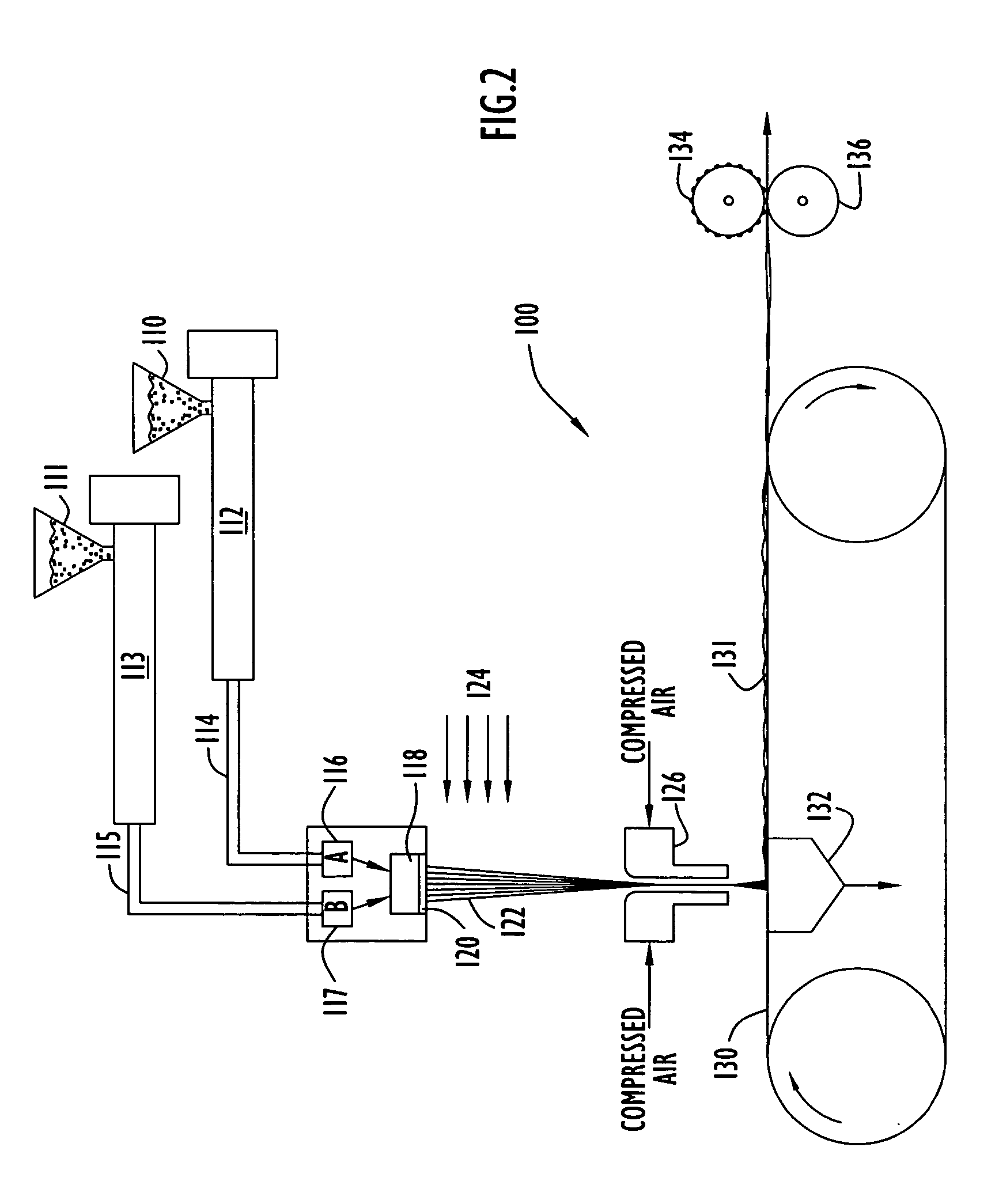Methods and apparatus for forming ultra-fine fibers and non-woven webs of ultra-fine spunbond fibers
a technology of ultra-fine fibers and non-woven webs, which is applied in the direction of carbonsing rags, chemistry apparatus and processes, weaving, etc., can solve the problems of low tensile properties, high investment cost to produce such laminates, and very difficult to obtain spunbond fabrics of fineness
- Summary
- Abstract
- Description
- Claims
- Application Information
AI Technical Summary
Problems solved by technology
Method used
Image
Examples
Embodiment Construction
[0022] The present invention overcomes the previously noted problems associated with producing a substantially uniform distribution of ultra-fine spunbond fibers having suitable transverse cross-sectional dimensions on the micron or nanometer scale. The present invention further provides a system that produces fabrics or other nonwoven web products of sufficient widths including ultra-fine spunbond fibers that exhibit enhanced look, feel and drape characteristics. In addition, the present invention provides a system and corresponding methods for producing a carbon nanotube or tubular fiber utilizing a melt extrusion process. The term “transverse cross-sectional dimension”, as used herein in relation to a fiber or filament, refers to the dimension of the fiber in a direction that is transverse its longitudinal dimension (e.g., the diameter for a round fiber).
[0023] The ultra-fine fibers are produced by extruding multicomponent fibers (i.e., a fiber including at least two different p...
PUM
| Property | Measurement | Unit |
|---|---|---|
| Length | aaaaa | aaaaa |
| Length | aaaaa | aaaaa |
| Length | aaaaa | aaaaa |
Abstract
Description
Claims
Application Information
 Login to View More
Login to View More - R&D
- Intellectual Property
- Life Sciences
- Materials
- Tech Scout
- Unparalleled Data Quality
- Higher Quality Content
- 60% Fewer Hallucinations
Browse by: Latest US Patents, China's latest patents, Technical Efficacy Thesaurus, Application Domain, Technology Topic, Popular Technical Reports.
© 2025 PatSnap. All rights reserved.Legal|Privacy policy|Modern Slavery Act Transparency Statement|Sitemap|About US| Contact US: help@patsnap.com



